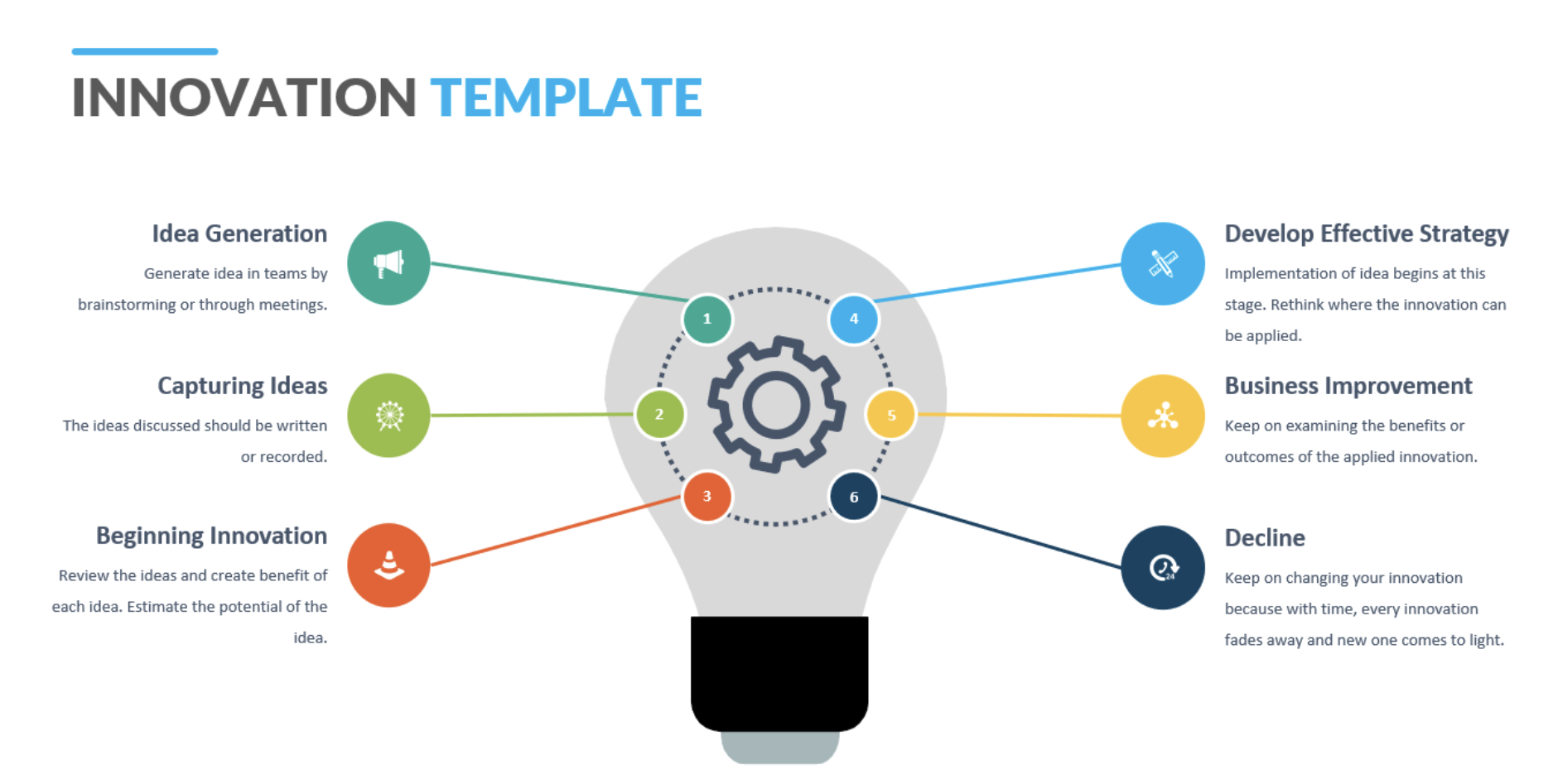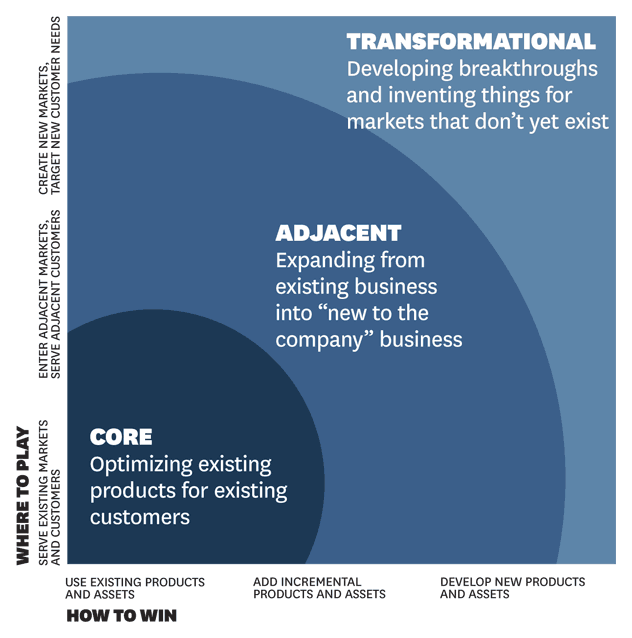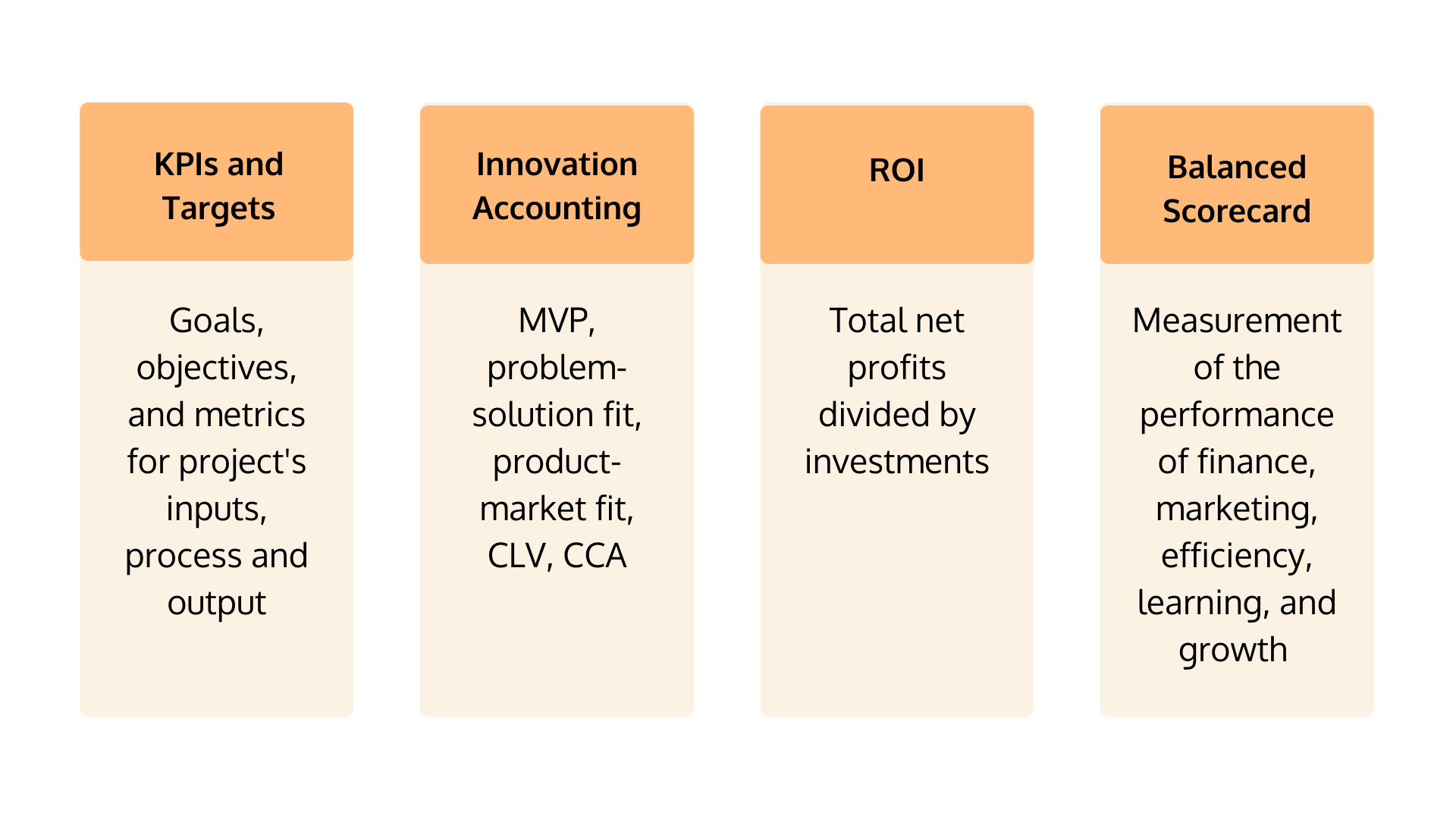innovation metrics. innovation metrics.
In today’s ever-changing business environment, innovation has become a cornerstone for maintaining competitiveness and fostering long-term growth. Metrics, when used effectively, can serve as powerful levers to not only drive behaviour but also evaluate the success of specific innovation initiatives. Big corporations have demonstrated how establishing clear innovation metrics can encourage creativity and experimentation, helping to ensure that businesses remain agile and forward-thinking.

Source: Innovation template
However, defining the right metrics is not without its challenges. In this article, we will explore how companies can leverage innovation metrics to support growth and competitive advantage, while addressing the pitfalls of traditional approaches. We will examine the importance of a well-rounded “family of metrics” and how businesses can establish systems that foster a culture of innovation, align with strategic goals, and drive both organisational capability and leadership behaviours.
Innovation metrics serve multiple functions within an organisation. They drive behaviour, foster strategic growth, and ensure that resources are allocated effectively to support new opportunities.
Companies like Google and 3M have successfully used metrics to encourage innovation among their employees. For example, 3M’s rule that 10% of employees’ time should be dedicated to experimenting with new ideas has led to a culture of continuous creativity and innovation. Similarly, they mandate that 35% of their revenues should come from products introduced within the past four years, ensuring a steady stream of innovative products.
Metrics like these, however, are not one-size-fits-all. Each company must tailor its innovation metrics to its unique strategic goals, resources, and competitive landscape. The challenge lies in defining metrics that are both meaningful and actionable, that will guide organisations in a way that ensures they are not just keeping up with the competition but are also strategically positioned to innovate continuously.
Traditional innovation metrics were designed for an industrial age, where companies often measured success by their R&D budgets, number of patents filed, or percentage of sales from new products. While these metrics are still used today across Fortune 1000 companies, they offer a limited view in an era that demands more Open Innovation, rapid technological change, and the embracing of disruptive solutions.
Today’s business environment requires a new breed of metrics. Companies now often look beyond their own walls for ideas and technology, embracing open innovation as a critical competitive advantage. The rise of disruptive technologies, such as AI and blockchain, requires organisations to reevaluate their traditional metrics and adopt new ones that account for strategic innovation, capability-building, and company culture.
For instance, focusing purely on the number of patents or R&D spending might stifle innovation by rewarding short-term gains and incremental improvements over radical, disruptive change. In this context, traditional innovation metrics might inadvertently inhibit rather than support strategic goals.
While it is crucial to measure innovation, many companies face the challenge of trying to measure everything, which often leads to conflicting behaviours and a focus on metrics that don’t capture the essence of innovation. When organisations are inundated with too many metrics, employees may lose sight of the broader objectives, and the innovation efforts may become fragmented and inefficient.
To avoid this, companies need to identify key metrics that matter most for driving innovation and business growth. This involves simplifying complex concept systems and ensuring that the chosen metrics align with the company’s core strategy.

Source: Matrix of Innovation Ambition
As innovation becomes an imperative across industries, business leaders need to embrace a new breed of metrics that goes beyond conventional measures. These new metrics should:
The best solutions often create simplicity out of complexity, acknowledging that successful innovation results from the synergies between various factors. For this reason, companies should adopt a “family of metrics” covering the most important drivers.

Source: KPIs & Targets
A well-rounded metrics portfolio ensures that organisations are not only tracking the right outputs but also managing the inputs necessary to drive innovation. A “family of metrics” should include:
Within each of these categories, companies should also distinguish between “input metrics” and “output metrics.” Input metrics are the resources and investments that drive innovation (e.g., R&D spending, number of collaborative initiatives, etc.), while output metrics measure the results of these efforts (e.g., revenue growth from new products, customer satisfaction, etc.).
Creating innovation metrics involves a disciplined and strategic approach that cascades throughout the organisation. It starts with the company’s overarching growth strategy and requires alignment across business units, divisions, and even individual teams. The process typically involves the following steps:
Metrics should never be static. Instead, they should evolve as the company learns from both successes and failures. A continuous feedback loop is critical for ensuring that the organisation remains on track and can adjust its strategies as needed. Engaging key stakeholders in this process ensures that metrics remain relevant and aligned with the company’s innovation goals.
What are your thoughts on the topic? Share them with us on LinkedIn.